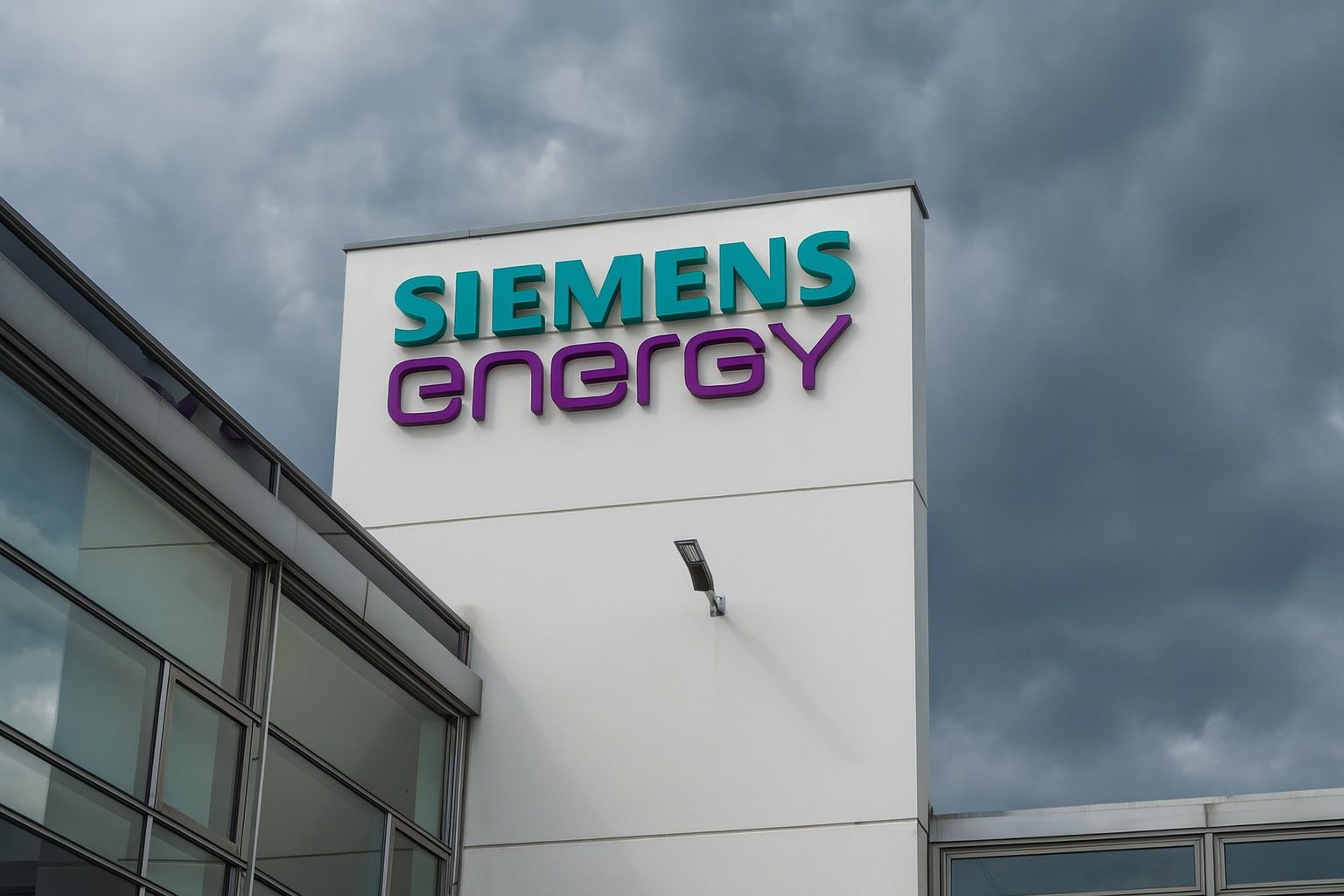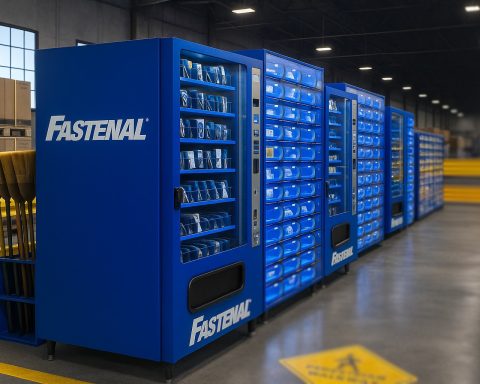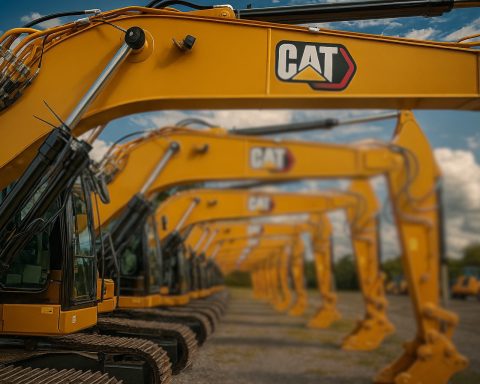Munich/Berlin – 14 November 2025 – Siemens Energy has drawn a bold line under its crisis years. The German energy technology group has reported the highest profit in its history, sharply raised its medium‑term financial targets, announced its first dividend in four years – and watched its share price rocket towards a record high.
Behind the headlines is a story of surging global electricity demand, AI‑driven data centre expansion, a booming grid and gas business – and a still‑troubled wind division that management insists it can fix.
Record €1.7 Billion Profit Signals a Turnaround
For the financial year 2025 (October 2024 to September 2025), Siemens Energy generated:
- Net income of €1.685 billion, up from €1.335 billion a year earlier
- Revenue of €39.1 billion, an increase of about 15%
- Order intake of €58.9 billion, up around 19%
- An order backlog at a new record of roughly €138 billion [1]
This is not only the company’s highest annual profit since the energy business was spun off from Siemens AG in 2020 – it’s also the first clean result that doesn’t rely on large one‑off gains, according to dpa reporting. [2]
Operationally, Siemens Energy achieved profit before special items of €2.355 billion, corresponding to a 6% margin, while free cash flow before tax surged to €4.663 billion, underlining how much cash the business is now generating. [3]
The strong numbers stand in stark contrast to 2023, when quality problems at wind subsidiary Siemens Gamesa and a collapse in investor confidence forced the group to seek multi‑billion‑euro state guarantees from the German government – a period when the share price briefly imploded. [4]
Outlook: Profit Set to Almost Double Again in 2026
Management isn’t treating 2025 as a peak. For the current fiscal year 2026, Siemens Energy is guiding for: [5]
- Comparable revenue growth of 11–13% (after 15.2% in 2025)
- Profit margin before special items of 9–11% (up from 6.0%)
- Net income between €3–4 billion, meaning earnings could almost double again
- Free cash flow before tax of €4–5 billion
Looking further ahead, the company has raised its 2028 mid‑term targets:
- Low‑teens percentage annual revenue growth from 2025 to 2028
- Profit margin before special items of 14–16% in fiscal 2028, up from a previous goal of 10–12% [6]
In other words, Siemens Energy is telling investors it expects to combine double‑digit top‑line growth with mid‑teens margins – the kind of profile more often associated with software companies than with heavy engineering.
Electricity Boom, AI and Grids: What’s Driving the Numbers
The core of Siemens Energy’s success is a powerful mix of structural trends:
- Rapid electrification of industry and transport
- Accelerated build‑out of renewable energy
- Massive investment in data centres, especially those serving AI workloads
- The urgent need to modernise ageing power grids worldwide [7]
The company’s own figures show how strong demand has become: order intake of €58.9 billion and a backlog of €138 billion give Siemens Energy multi‑year visibility on future revenue. The gas‑turbine division alone sold 194 turbines, nearly double the prior year, while grid technologies secured more than €21 billion in orders, with particularly strong demand from the United States. [8]
At the same time, CEO Christian Bruch is careful not to oversell the AI story. He has stressed that data centres are a “good business” but will still account for only a small fraction of total global power demand, even as their consumption rises. The bigger driver is the broader electricity boom, from renewables and industrial electrification to transmission upgrades, according to dpa’s roundup of his comments. [9]
Wind Power: “Tale of Two Cities” at Siemens Gamesa
The one division still firmly in the red is Siemens Gamesa, which builds onshore and offshore wind turbines.
- For the year to September, Siemens Gamesa posted an operating loss of around €1.36 billion, still feeling the effects of quality issues in onshore turbines that emerged two years ago. [10]
- Management expects break‑even in 2026 and a small profit in 2027. [11]
Bruch describes the wind business as a “tale of two cities” (paraphrased). Offshore, Siemens Gamesa remains a global leader with strong products and pricing power. Onshore, however, sales of newer models have been halted while the company fixes quality problems, and competition from Chinese manufacturers raises tough questions about long‑term margins. [12]
Importantly, Siemens Energy’s leadership sees limited synergies between onshore and offshore wind. That admission has fuelled speculation about whether the onshore unit might eventually be separated or further reshaped, although the company insists it is committed to turning the whole wind division around. [13]
Despite the drag from wind, Siemens Energy expects all business areas to deliver double‑digit margins over time – including Siemens Gamesa – reflecting internal pressure to either fix or restructure underperforming activities. [14]
Dividend Returns After Exit from State Guarantees
One of the most symbolic milestones of this results season is the return to dividend payments.
- Siemens Energy has proposed a dividend of €0.70 per share for fiscal 2025
- It’s the first payout in four years, and the highest since the 2020 spin‑off from Siemens AG
- The payout corresponds to roughly 50% of adjusted net income [15]
In 2023, the company was still constrained by a large, state‑backed guarantee facility agreed with the German government at the height of the wind crisis. That €11 billion guarantee has since been replaced ahead of schedule by a €9 billion bank facility, which removed dividend restrictions and paved the way for the new payout. [16]
For long‑suffering shareholders, the dividend is more than just cash – it’s a signal that the balance sheet has healed and that management believes the turnaround is sustainable.
Stock Near Record High as Analysts Race to Catch Up
Markets have reacted with enthusiasm:
- On Friday, Siemens Energy shares jumped by more than 10%, at times rising over 11.5% to around €112–113 – just shy of the all‑time high near €114 set earlier this month. [17]
- The stock has now more than doubled in 2025, cementing a spectacular recovery from the lows of the 2023 crisis. [18]
Analysts are racing to adjust their models. Deutsche Bank Research, for example, has lifted its price target from €115 to €120 and stuck with a “Buy” rating after the new 2028 targets, arguing that consensus forecasts for that year’s operating profit have “about 15% upside”. Other brokers, including RBC and Jefferies, see even more room, with targets as high as the mid‑€130s. [19]
Several commentators highlight the same basic story: mid‑teens margin ambitions, a locked‑in order backlog and strong grid and gas businesses mean Siemens Energy increasingly looks like a structural winner of the global energy transition – provided it can finally stabilise wind.
Preparing to Drop the “Siemens” Name
One of the more surprising updates from the annual press conference had nothing to do with turbines or transformers: Siemens Energy plans to change its name by the end of the decade.
Bruch told reporters that there will be a point, “towards the end of the decade”, when the company will be called something else and no longer carry the Siemens brand. The reason is mainly financial:
- Siemens Energy currently pays roughly €300 million a year in brand licence fees to Siemens AG
- The contract stipulates a fee of 1.2% of non‑wind revenue, meaning the bill will keep rising as the business grows
- The agreement can be terminated in 2027, after which there is a three‑year transition period [20]
Bruch emphasised that the Siemens name was extremely valuable immediately after the spin‑off in 2020 – “doors opened” more easily in the power and energy world. But as the company builds its own track record and brand equity, the cost of the licence becomes harder to justify.
A rebrand would mark a psychological break as well: the final step from being “Siemens’ former energy division” to a fully independent global player.
Tariffs and Other Risks: Not All Tailwinds
The picture isn’t entirely risk‑free. Siemens Energy expects U.S. import tariffs to shave at least a low triple‑digit million euro amount off its 2026 earnings, although that would be less than the roughly €200 million hit booked this year. [21]
Other watchpoints include:
- The pace of the Siemens Gamesa turnaround, particularly in onshore wind
- Potential delays in grid expansion projects due to permitting and political debates
- Volatility in energy policy, such as Germany’s recently scaled‑back plans for new gas plants as part of a decarbonisation compromise [22]
Still, management argues that the underlying demand drivers – electrification, renewables, digitalisation and data centres – are secular rather than cyclical, and that the current backlog provides meaningful protection against short‑term shocks. [23]
What It All Means for the Energy Transition – and for Investors
For policymakers, Siemens Energy’s results highlight how quickly the energy landscape is changing:
- Decarbonisation and AI are converging to create an unprecedented hunger for electricity
- Grid bottlenecks, not generation, increasingly risk becoming the weak link
- Large‑scale equipment makers that can deliver turbines, transformers and grid solutions at scale are gaining enormous leverage
For investors, Siemens Energy has effectively re‑positioned itself from “crisis stock” to “growth stock”:
- The record 2025 profit and strong cash flow show the core business works
- The 2026 and 2028 targets promise double‑digit annual growth and mid‑teens margins
- The dividend comeback and likely future rebranding indicate confidence in long‑term independence and profitability [24]
The big open question is whether Siemens Gamesa can truly become a sustainable, double‑digit‑margin business in a brutally competitive wind market. If the wind division stabilises even at modest profitability, the rest of Siemens Energy’s portfolio suggests substantial upside remains – both for shareholders and for an energy system racing to keep the lights on in an increasingly electrified, AI‑powered world.
References
1. www.siemens-energy.com, 2. www.flz.de, 3. www.siemens-energy.com, 4. en.wikipedia.org, 5. www.siemens-energy.com, 6. www.marketscreener.com, 7. www.siemens-energy.com, 8. www.siemens-energy.com, 9. www.onvista.de, 10. www.marketscreener.com, 11. www.marketscreener.com, 12. www.marketscreener.com, 13. www.marketscreener.com, 14. www.marketscreener.com, 15. www.siemens-energy.com, 16. www.siemens-energy.com, 17. www.boersen-zeitung.de, 18. www.boersen-zeitung.de, 19. de.marketscreener.com, 20. de.marketscreener.com, 21. www.marketscreener.com, 22. www.onvista.de, 23. www.siemens-energy.com, 24. www.siemens-energy.com







